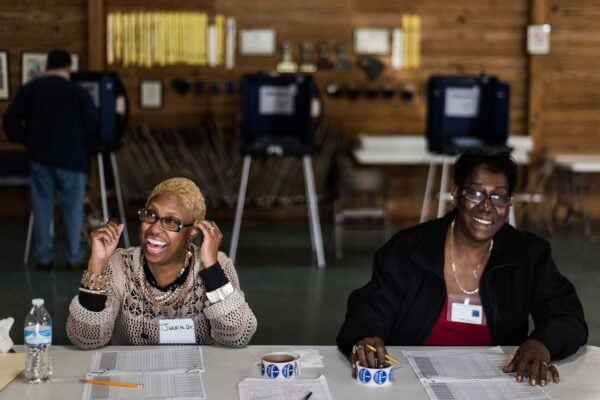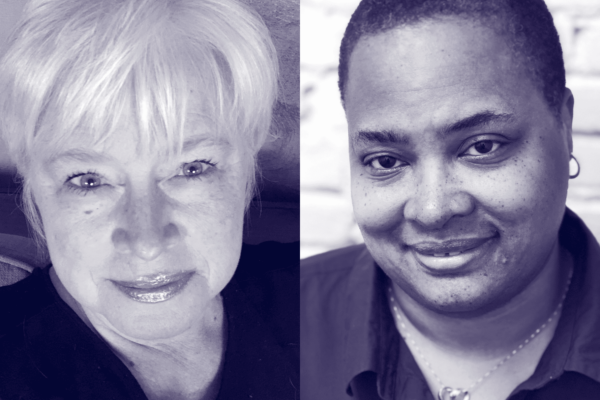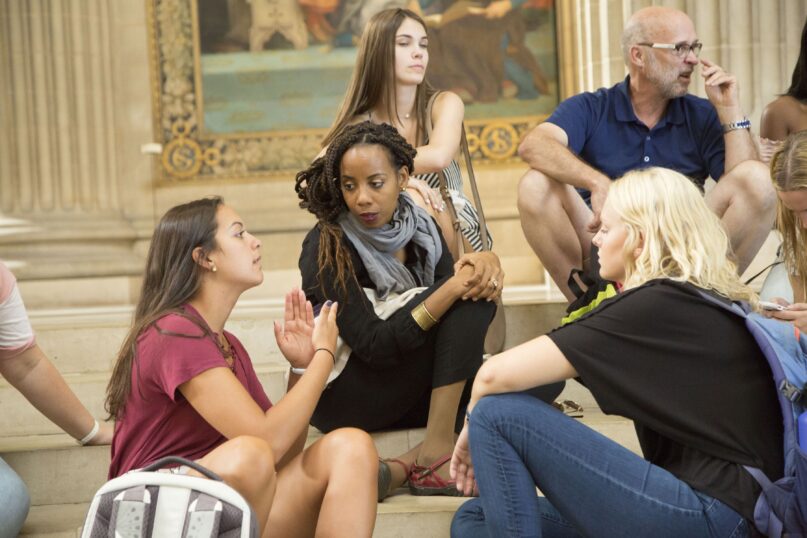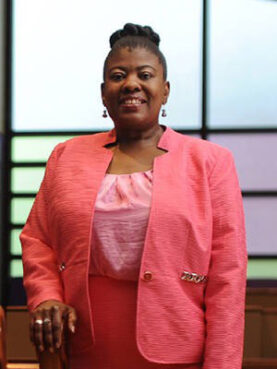Eli Cahan
Capital & Main
As a young girl, Arlene Juanico would rush to gather the laundry before the explosions started.
When the alarms sounded, Juanico would hustle to grab the clean garments off the clothesline before she was enveloped by dust clouds. But Juanico’s little legs usually couldn’t get her back to shelter in time.
That’s when the yellow-flecked dust – emerging from detonations in the sacred mesa the Laguna tribe knows as Squirrel Mountain – would catch up to her. That’s when it would enter Juanico’s throat, burrowing deep into her lungs.
It’s the same dust she would confront when, as an adult, she worked for the Anaconda Copper Co.
And it’s the dust that would persist in her lungs, kidneys and bones. There, hidden in the dark recesses of her chest, the particles lay until one day decades later a CT scan would show Juanico and people like her why they hadn’t been able to take a full breath in decades. They’d get a similar diagnosis – idiopathic pulmonary fibrosis – one mangled lung at a time.
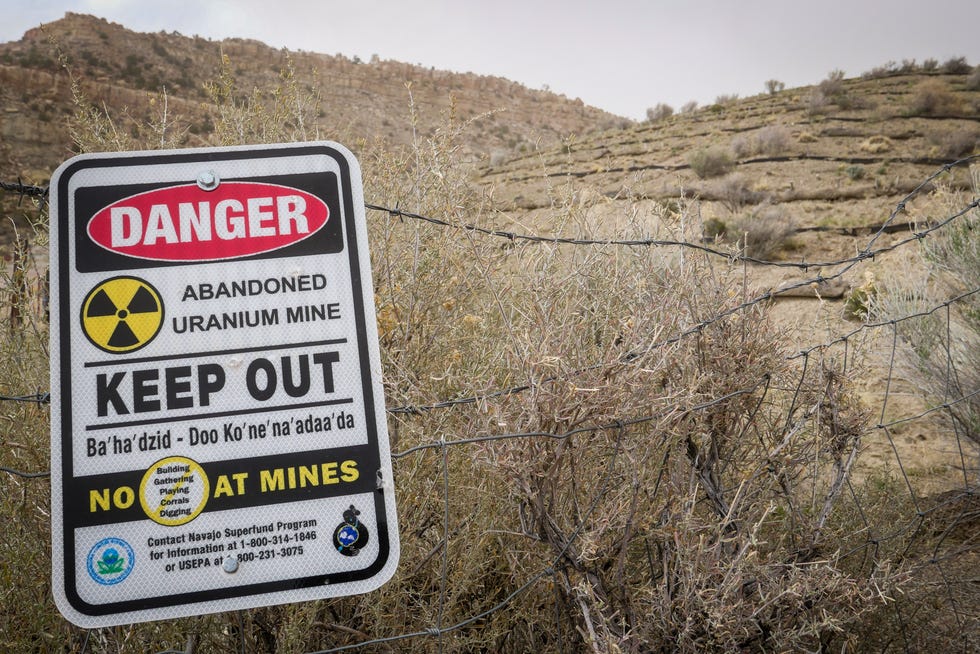
As such, the dangers of one of the largest uranium mines in American history didn’t abate when the dust clouds dissipated.
Today, hundreds of mines lie abandoned across New Mexico’s Indigenous lands. So do scores of eroding radioactive landfills meant to bury uranium mine waste.
As a result, when COVID-19 struck in 2020, the Laguna, already afflicted by diseases that made it hard to walk, speak or breathe, were set up for severe COVID-19, said Loretta Anderson, a home health aide who is Laguna. So many of her people succumbed during the pandemic that the tribe enlarged its graveyard.
“Many of those we lost through COVID-19 had underlying conditions,” Anderson said. “This is the reason many of them have died.”
Federal guidance and state data suggest the same is true for thousands of Navajo and Acoma who were exposed to uranium before suffering life-threatening cases of COVID-19
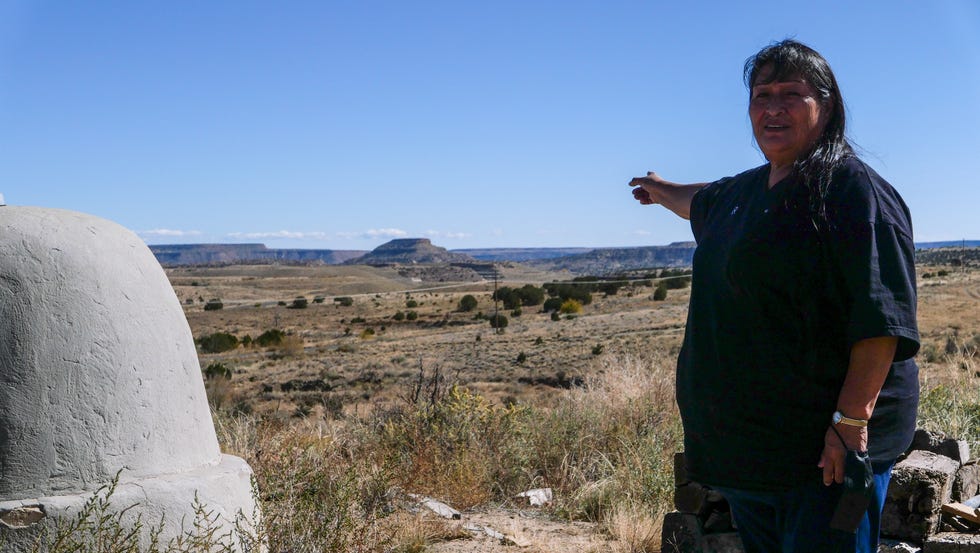
Now, these communities fear what the future holds for their wellbeing, health and culture.
That leaves Juanico, who is 66 years old and now can barely crest the slope at her ancestral home overlooking bluffs where explosions once raged without becoming short of breath, concerned for her own health.
“I pray it doesn’t get any worse,” she said. “But what do I do … when it gets full-blown?”
‘It follows me every day’
Deep in northern Arizona’s sun-scorched slopes, Bob Begay has been sitting, breathlessly, for years.
Day-to-day life is a struggle. The tight corners surrounding his family’s turquoise-painted hooghan, the traditional eight-sided dwellings of the Navajo people, don’t lend themselves to navigation by wheelchair. And the family’s homesite doesn’t have electricity, which has turned his oxygen machine into a glorified paperweight.
For all his struggles, Begay knows he’s not alone. The 85-year-old has watched friends and neighbors die one after another following years of similar symptoms. So, Begay’s afraid of what lies ahead.
Things in these glimmering white hills weren’t always so bleak.
During his childhood, they’d echo with hoots and hollers: Begay and his 11 siblings relished tending to sheep and cattle that roamed bucolic pastures. Other days, they’d shout and cheer: A transplanted Yankees devotee, Begay prowled the batter’s box like DiMaggio at a time when Joltin’ Joe was giving pitchers fits back east.
But their single mother struggled to make ends meet amid the fallout of the Great Depression, and the children often went hungry. By age 10, Begay was working full time dyeing, stretching and tying wool for the family’s rug-weaving enterprise. And by 14, he was coming home covered in dust containing the radioactive ingredients for the most powerful weapon known to mankind.
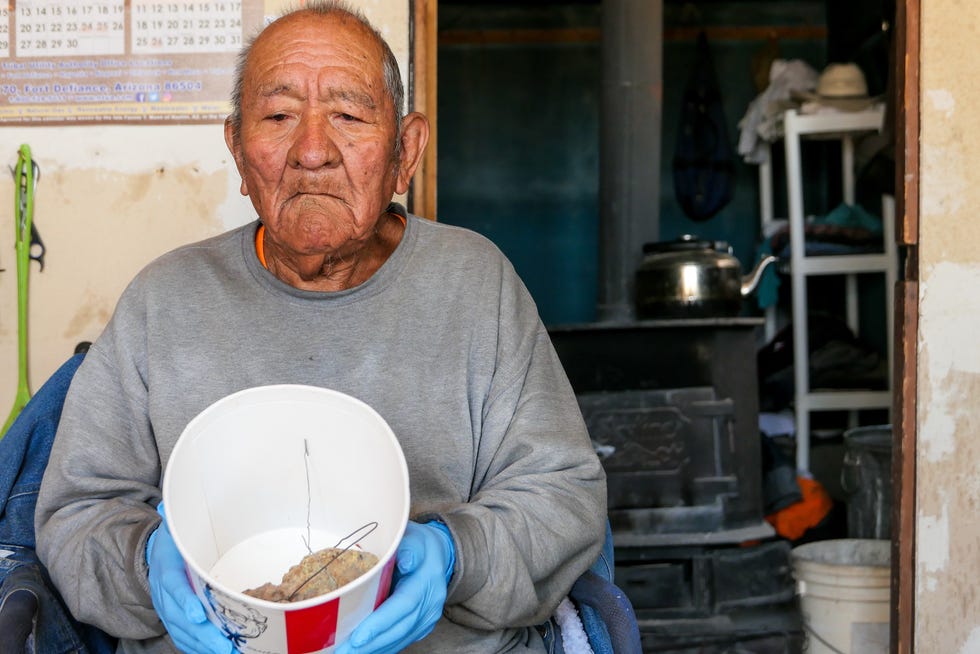
As a junior miner for the Vanadium Corporation of America, he spent his days once again roaming the nearby hills: only this time, with the intent of placing dynamite into the belly of those hills known in Navajo as hal ghai yah nal kiid.
Soon enough, Begay had a family of his own. He was committed to making sure they never struggled like he had. “I didn’t want the kids to have a need for anything,” he said.
Two decades after he first set foot in a mine, Begay started “huffing and puffing” at work. He was in his mid-30s. Crippled by exhaustion just hours into the day, he’d need to take break after break, or bow out of certain jobs at the mine altogether.
It wasn’t until nearly half a century later that he got a full medical work-up, and an explanation: end-stage lung disease, likely due to uranium exposure. Until then, he explained, he’d never been told of the well-documented dangers, and his employers never gave him a shred of protective gear.
These days — no longer able to bathe or dress himself, and speaking with frequent pauses between sentences to sneak in a breath — Begay laments his decision to work in the mines.
“It follows me every day of my life,” he said.
As malignant as Begay’s work was for him, his circumstances aren’t exceptional.
More from Capital & Main:A drunk mechanic, shackled immigrants, a crash landing: ICE detainee flights have history of dangerous practices
Across the Navajo Nation — an area larger than 10 U.S. states that touches Arizona, Utah, Colorado, and New Mexico — nearly 30 million tons of uranium were pulled out of more than 500 mines between 1944 and 1986. That mining changed the course of history, tilting military dominance westward one atomic bomb at a time.
But that pursuit of nuclear supremacy came at the expense of many Indigenous people like Begay. Calculating just how many is a daunting task.
The Indian Health Service estimates that approximately 4,000 Navajo worked in the mines. But advocates say that statistic leaves out the vast majority of people who have suffered – or will suffer — from diseases linked to uranium exposure. It doesn’t count the many who inhaled the toxic dust when it blew off their loved ones’ clothes or stained their laundry or emanated from the clay foundations of their homes.
The IHS stat also doesn’t include uranium mining’s impact on other tribes such as Laguna, Acoma, and Hopi whose loved ones worked in mines like Jackpile at Squirrel Mountain, which contributed 25 million tons of uranium over some 30 years.
That’s partly because there was no universal screening program for uranium workers such as miners, millers and transporters until 2002, nearly six decades after the first mine opened.
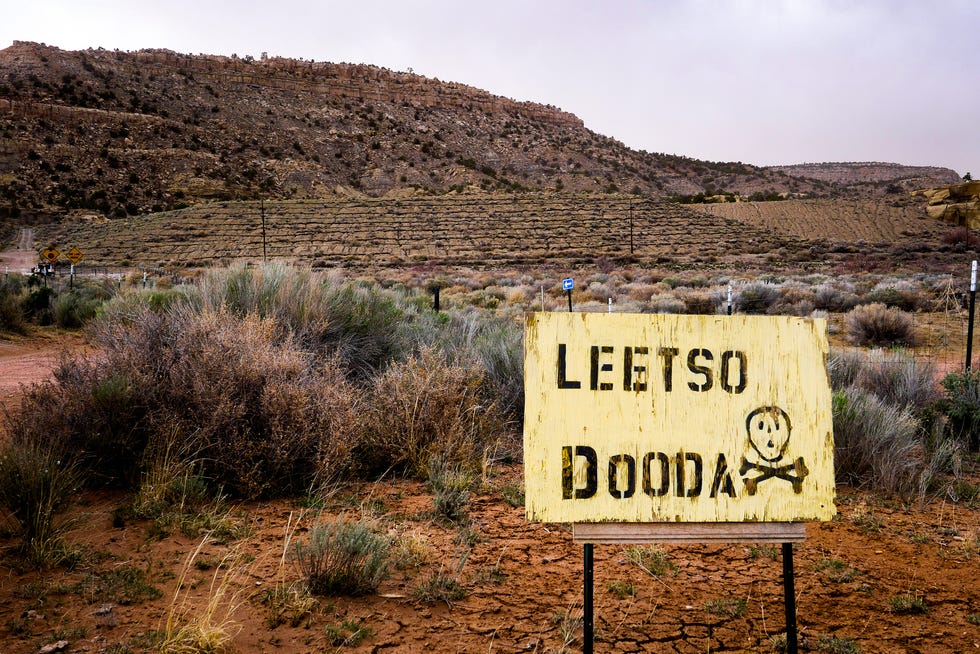
Even with that program, which is available at only two sites in New Mexico, people’s ability to access care depends on their ability to travel, said Loretta Christensen, the chief medical officer of IHS. That’s a considerable obstacle for a community where one in three people live in poverty — and often have limited transportation access while facing tight gas budgets. It is also an environment where ferocious weather routinely makes the pothole-ridden, oft-flooded roads impassable.
Moreover, Christensen said, even when people can get to these sites, the facilities are frequently ill-equipped to diagnose and treat diseases caused by uranium, and often lack the equipment they’d need to make such a diagnosis.
And, beyond the program, according to Christensen, doctors don’t routinely bring up mining or uranium exposure.
Garrett Vallo, an Acoma member of an intertribal coalition advocating for uranium victims, said that the gaps in medical data and health systems for people who worked in the mines mean they are often going years without the care they need.
That is, Vallo explained, if they ever get the care at all.
“I know a lot of people who were miners who died,” he said, “and who we never knew anything else about.”
‘We’re losing our people’
The dangers don’t stop with those who worked in the mine.
They include people like Begay’s daughter Rita, who lived near the mines. People who inhaled the dust while playing outdoors, or hugging a miner dad just home from work.
These cases are what Christensen calls “secondary exposures,” in reference to the diseases locals developed despite having never worked at the mines themselves. Cases such as these often go undiagnosed and untreated, Christensen added.
“We actually tell our providers, you need to ask if … they lived near a mine or a disposal site,” Christensen said. “We need to have a higher level of suspicion.”
There are also “intergenerational” consequences, Christensen said: IHS studies have found elevated uranium levels in infants born to exposed mothers, suggesting that uranium may be passed through placental blood, breast milk or other sources.
All told, across New Mexico, the number of secondary survivors filing for health care claims due to uranium exposure is 53% higher than the number of uranium workers who have filed.
Finally, there are the tertiary survivors, Christensen said: those who continue to live on the toxic land, inhaling the dust and drinking the water 40 years after the last block of uranium ore came out of the ground.
“There’s kids that are still being exposed,” said Begay. “When is it going to end?”
Nonetheless, given the lack of comprehensive screening, the absence of data on primary, secondary and tertiary victims means the actual burden of uranium-related illness, while vast, is unknown. It means that when people like Begay’s friends and colleagues died — or when his children and grandchildren do — nobody can definitively prove whether uranium played a role.
Without that data, people tend to simply attribute those deaths to old age or natural causes, Vallo said.
“They don’t think twice.”
‘They didn’t have a fighting chance’
By the late 1870s, Friedrich Harting and Walther Hesse had seen enough.
After watching miner after miner in the Viennese Alps cough up blood while working day and night in the pits, the two Austrian doctors sent a manuscript back from snowy Schwartzenberg to metropolitan Berlin. Their study of the mines of Schneeberg found that 75% of lung cancer cases were “at the expense” of the uranium mines.
Since that study, doctors have further nailed down the association between the fluorescence-smeared, corn-colored rock and life-threatening disease.
By 1959, decades before universal workplace protections were enforced for uranium workers, the United States Public Health Service had established its own connection between the nuclear ore and lung cancer. Years of study since have further confirmed how the toxic metal and the radioactive fireballs it releases – alpha particles and gamma rays –can cause everything from widespread lung scarring to kidney failure to DNA mutations producing cancer.
Fast-forward to March 2020.
Early in the COVID-19 pandemic, the Centers for Disease Control and Prevention released a list of conditions that make people especially vulnerable to hospitalization and death from the virus. On that list? Lung scarring. Kidney failure. Cancer.
Yet when COVID-19 tore through the Navajo Nation and other Indigenous lands in the spring of 2020, the decades-long legacy of uranium poisoning didn’t figure into public health conversations.
Data that Capital & Main obtained from the New Mexico Department of Health reveals just how deadly this legacy may have been for Indigenous peoples across the state.
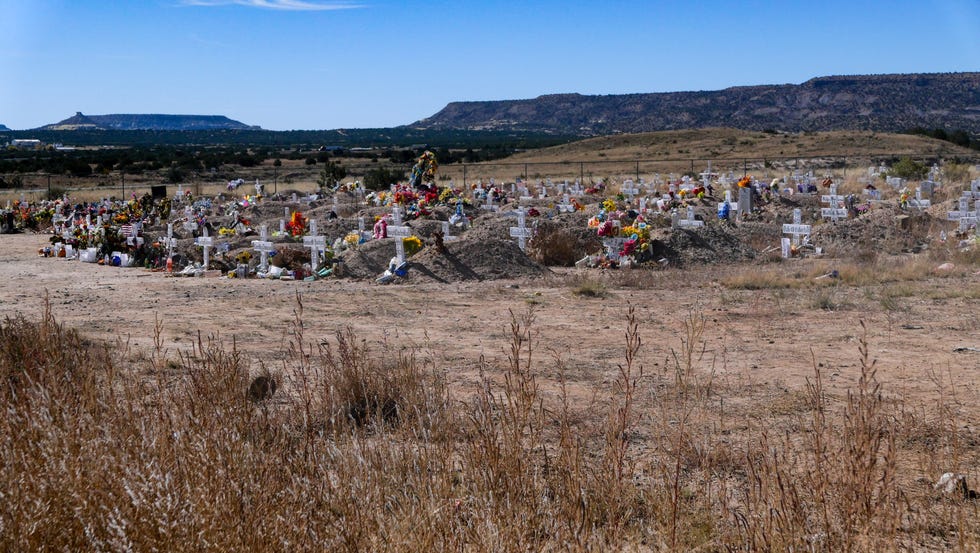
As of March 2022, Indigenous peoples were hospitalized for COVID-19 up to six times more often than any other demographic group, and up to five times more likely to have underlying kidney and lung disease. They were also up to nine times more likely to end up on a ventilator — and up to seven times more likely to die — than any other group.
Anderson, in Laguna, knew dozens of former miners who died of the virus. At one point, she said, so many were dying of COVID-19 that the pueblo had to expand the cemetery.
Vallo, in Acoma, witnessed a similar phenomenon. “These people had health conditions that, when the COVID-19 hit them, it took them so quickly,” he said.
“They didn’t have a fighting chance.”
‘Your hand will continue to burn’
When Dariel Yazzie peers across the butte-studded vistas of Monument Valley, he sees two things: the magisterial home of his shinálí, or paternal grandfather, that reaches back as far as his people’s stories can tell, and the enduring shadow of uranium.
Yazzie has a long history with the stuff.
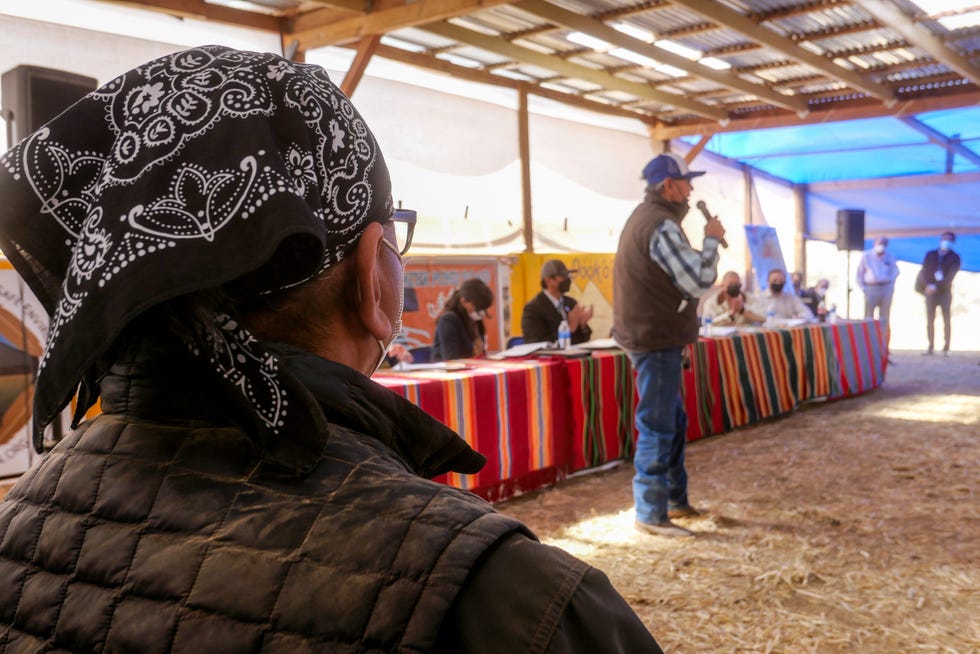
His paternal grandfather, Luke Yazzie, contracted out his lands for mining, which is why he is widely credited with introducing uranium mining to the region — the first domino to fall in the decades of extraction and exploitation by Anglos that followed.
Yazzie spent his adult life working for the Navajo Environmental Protection Agency, trying to understand uranium’s toll on his shinálí’s – and tribe’s – land. And, trying to clean up the mess that the white men, or bilagáana, left in their wake. A mess of abandoned mines, toxic runoff and contaminated waterways that left one family member after another debilitated with uranium-associated disease, or dead from it. A mess that’s left the cottonwood-shaded dale of his childhood uninhabitable.
“The fact that I go out there, and I don’t have family to greet me… it hurts,” Yazzie said.
Environmental data obtained by Capital & Main from the federal EPA illustrates just how ubiquitous uranium contamination is across Navajo lands. Screening data found that hundreds of structures were located near mines, and that the majority of mines leached into nearby surface water and groundwater wells that locals drink from. Nearly 40% of the mines were located by homes.
The same appears to be true elsewhere. In Laguna Pueblo, the agency has conducted soil removals, foundation renovations, radioactive waste abatements, and demolitions at dozens of homes that were contaminated by uranium. Sean Hogan, a manager for the EPA who oversees these territories, described the ongoing contamination as “widespread and significant.”
In addition to the locations awaiting cleanup, there’s concern that even sites purportedly secured through tailings piles — in which radioactive ore is collected and buried, coffin-like, below mounds of dirt — are no longer safe.
For example, there’s the tailings pile that sits yards away from the cluster of lodges nestled in a valley between two red rock ridges where Perry and Henry Tso grew up in Tse Tah, Arizona.
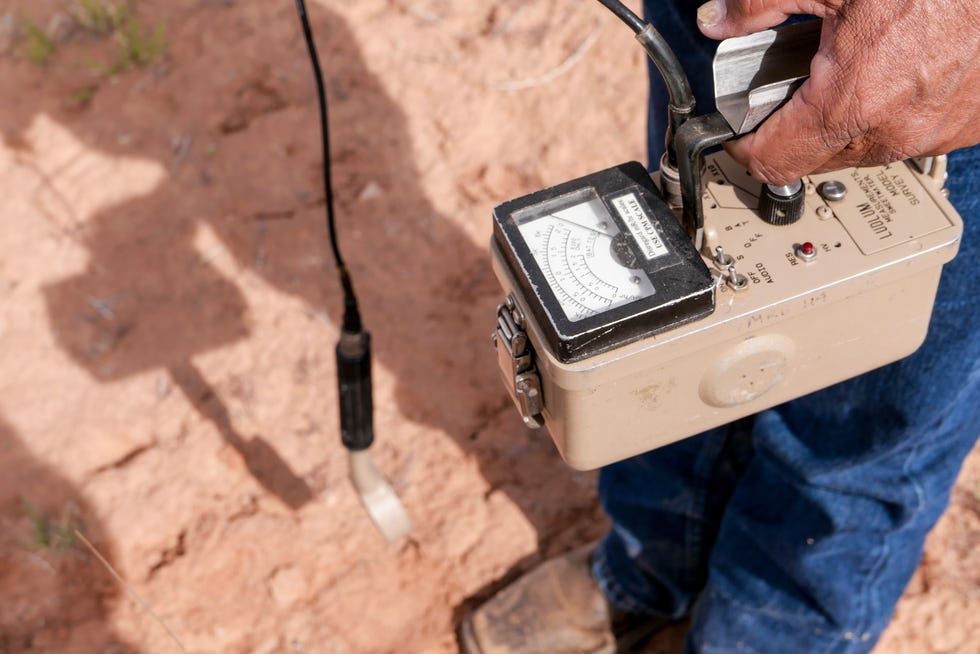
Though the EPA does not routinely review the integrity of tailings piles these days, Hogan said that erosion continues to uncover highly radioactive material.
When the Tso brothers walk up and down the pile with a Geiger counter –over half a century after uranium was last mined in the area – it detects levels of radiation far above the EPA’s safety thresholds. Whether that’s due to years of dust storms and flash floods, or to faulty construction in the first place, the brothers say the result is the same: They’re exposed, their loved ones are exposed, and their land is poisonous.
“There were so many Band-Aid jobs,” Henry said. “We’re still suffering over here.”
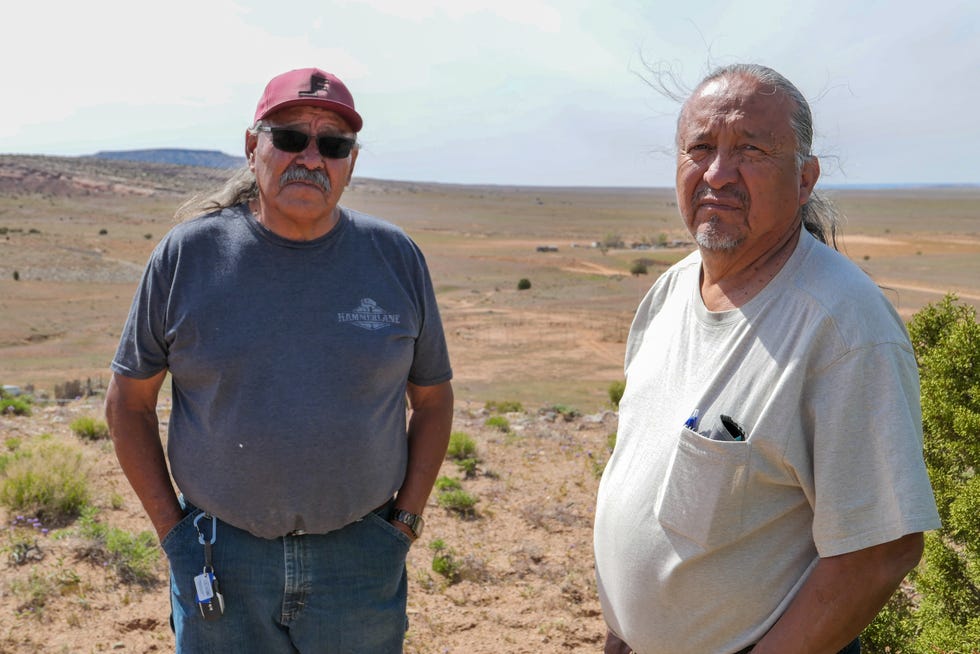
Federal officials also acknowledge the ongoing public health impact of uranium exposure. Contamination is “definitely a problem of the present,” said Christopher Hanson, chairman of the Nuclear Regulatory Commission (NRC), the federal oversight body tasked with protecting public health related to radioactive materials. “You can’t escape that history.”
The cumulative exposure suggests future generations could be saddled with crippling health conditions that could make them similarly vulnerable to the ongoing COVID-19 pandemic. Or, to the next pandemic.
“Unless we’ve mitigated every single mine and cleaned up every tailings pile, [exposure] is going to go on,” Christensen said.
“If you put your hand over a flame,” she added, “your hand will continue to burn unless you remove your hand, or you turn off the flame.”
‘We want to come home’
But until those cleanups happen, families like the Yazzies will face continued displacement from their ancestral lands.
In the meantime, they cannot herd their once prolific flocks, nor cultivate their cornfields, nor harvest the corn pollen for prayer. It means a loss of culture, tradition and identity.
“I hear my grandparents saying … ‘Grandson, your umbilical cord is buried here at the horse corral, this is where you’re from, this is where you’re bound to,’” Yazzie said. “We want to come home.”
Meanwhile, with her people getting sicker each day, Anderson is concerned for the heritage they’ve fought so hard to protect.
Today’s Laguna, whose roots trace back to 6,500 B.C., proudly carry the torch for generations of expert farmers, exquisite ceramists and fierce warriors. But since 1952 – since Jackpile began polluting their water, poisoning their land and sickening their young and old alike – the Laguna legacy has been fading.
“We’re losing our people,” Anderson said.
Eli Cahan is a freelance journalist. This article was produced by Capital & Main, a nonprofit publication that reports on economic, environmental and social issues. It was supported by the USC Annenberg Center for Health Journalism's Impact Fund for Reporting on Health Equity and Health Systems. The article is co-published with permission.











